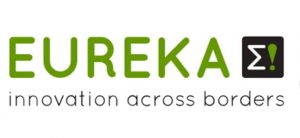DIPIMAM
Development and implementation of a new PIM binder system using advanced methods
Principal Investigator: Carmen Galassi
Involved personnel: Davide Gardini
- Starting date: 01/02/2008
- Duration: 24 months
- Total funding: 280.000 €
- Call: EUREKA Project – E!4212
- Coordinator: Drago Torkar (Josef Stefan Institute, Slovenia)
- Consortium: 2 Research Institutes (JSI, CNR-ISTEC), 1 university (University of Ljubljana) and 1 company (Hidria AET d.o.o) from two European Countries
- Official website: https://www.eurekanetwork.org/project/id/4212
The main purpose of the DIPIMAM project is to improve the quality of the production of the ceramic parts with powder injection moulding (PIM) technology in Hidria AET, Tolmin. The variation of the technological process used in this particular plant is called low-pressure injection moulding (LPIM) which consists of the following stages: feedstock preparation, mould filling, debinding, sintering, machining and glazing. The project will investigate the impact of a combination of different feedstock binders on mould filling and debinding stage. The feedstocks are ceramic suspensions made from different oxide and non-oxide powders and additives, such as binders. The rheological properties of the suspensions are of critical importance for the mould filling and debinding stage.
Within the proposed project we intend to combine two distinct but yet inter-connected advanced techniques: artificial neural networks (ANN) and computer simulation of the mould filling process. Both of them will be supported by an extensive set of measurements and experimentally verified using data from a real production. As a consequence, three concrete results are expected: an improved mould filling tool for moulding ceramic shafts, an improved ceramic suspension (feedstock) optimizing mould filling and debinding stages of LPIM, and an ANN based software tool for prediction of green and brown part properties from feedstock composition and binder system.
The experimental verification will be used to test the results of described procedures. It will consist of the rheological behaviour of different feedstock suspensions as a function of the composition i.e. the solid loading and the kind and the quantity of organic additives. The binder burnout will be investigated as well, this process being extremely critical when the solid loading is very high. Therefore, the powders’ properties (particle-size distribution, specific surface area (BET), morphology) and the thermogravimetric analysis (TGA) of some binders formulation will be determined. The dependence of the viscosity on shear rates and on temperature will be investigated in the processing conditions the material will undergo.
After viscosity measurement with rotational viscometer low pressure injection moulding will be performed on the laboratory equipment at different conditions. The influence of the processing parameters on the defects (voids, inclusions, pots) speciments will be investigated by x-ray and/or ultrasound inspection system. After mould filling the green part dimensions and the shape will be measured and the dimensional variability will be calculated. The green parts will be thermally debound at different conditions and finally sintering process in oxygen condition will be performed. After machining the parts will be characterised by mechanical (flexural strength) and thermo-physical measurements such as microstructural analysis.